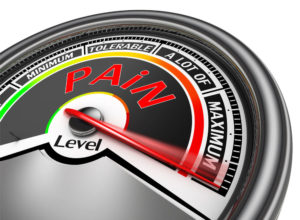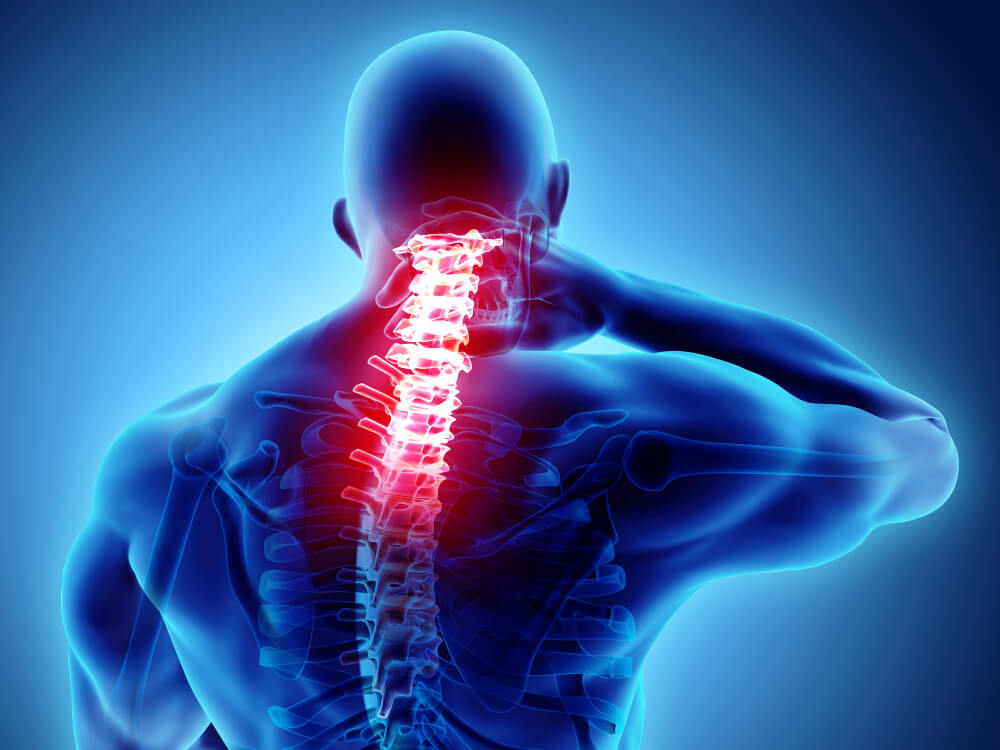 |
Dr. David Musnick, MD Functional Medicine Doctor Pain Medicine Expert |
Definition | Sensitization | Treatment | Supplements | Diet
For people with chronic pain, even the simplest activities can be draining. Living with constant pain drastically affects quality of life and can lead to an over-reliance on pain killers and NSAID drugs.
The problem is, these drugs only mask the pain. They do not target or heal the root cause. Over time, these medications have significant side effects. In fact, it is estimated that each year in the US over 100,000 hospitalizations and 16,500 deaths are caused by gastrointestinal complications for just arthritis patients alone.[1] These complications are the direct result of the damage that NSAIDS can cause to the gut, kidneys, heart, and stomach.
In this article, I would like to share a different approach to this debilitating condition, a functional medicine approach I have developed to resolving chronic pain.
What Qualifies as Chronic Pain?
A person who has constant or intermittent pain for more than 4-6 weeks with no clear pathology (serious underlying disease or illness) is considered to have chronic pain. This can be orthopedic pain, internal pain, tissue pain, or other generalized pain.
Common characteristics of chronic pain may include:
- Constant or intermittent pain that has been going on for more than 4 weeks
- Pain that’s easily triggered
- No clear underlying cause of the pain that can be treated
- Usually chronic pain is orthopedic in nature, but may affect the entire body.
In addition to the chronic pain, patients may also experience fatigue and sleep disturbances, like insomnia. Many patients often complain of feeling completely wiped out most of the time, which may keep them from their normal activities.
Often chronic pain sufferers will feel pain more intensely than the average person. This is a clear sign that something is amiss with their pain receptors or pain processing system. The correct medical approach needs to find and treat the actual issue behind the pain, instead of merely masking pain with pharmaceuticals.
Sensitization: Having a Dysfunctional Pain Processing System
 Your pain processing system involves the pain receptors in your tissues, segments of your spinal cord, thalamus and the frontal cortex in your brain. This system manages how you experience pain. When a patient feels much more pain than they should or has pain that is too easily triggered, then we say that they have a dysfunctional pain system.
Your pain processing system involves the pain receptors in your tissues, segments of your spinal cord, thalamus and the frontal cortex in your brain. This system manages how you experience pain. When a patient feels much more pain than they should or has pain that is too easily triggered, then we say that they have a dysfunctional pain system.
Sensitization is a term that has been used in pain management for a long time. It means that pain is very easily triggered. If your pain system is sensitized, then it experiences pain much easier and can even create its own pain.
When the pain receptors are constantly operating close to your pain threshold, the high level of activation causes either intermittent pain that is more easily set off or constant pain. The pain you might experience is at a higher level that would be expected from the condition. It can be is much more helpful to determine which tissues are generating the pain the patient is experiencing. The goal is to find all the tissues with sensitized pain receptors and then come up with an approach to address each one.
Unfortunately in normal medicine, the pain processing system is often neglected or thought to be address by drugs like Neurontin and Lyrica. Managing pain by addressing changes in the brain and spinal cord is not common practice. Pain management is an area where functional medicine can make a big difference. It offers a different approach to specifically addressing a dysfunctional pain processing system.
Six Ways to Normalize Pain Receptors

In functional medicine, there are six main ways to improve pain receptor function and bring them back to normal. These include:
1: Frequency specific microcurrent (FSM)
FSM is a treatment that delivers micro amperage currents in specific frequencies via electrodes or graphite conductors directly to the tissue. It helps decrease inflammatory molecules, decreases pain and helps the pain processing system. You can also use FSM to work on the brain to calm down the neural pathways that might be over-reacting.
2: Fix sleep problems
When people don’t sleep well they become more sensitized to pain. Lack of sleep can be caused by stress, anxiety, depression, lifestyle issues such lack of exercise or too much screen time, or by the pain itself. Fixing sleep related problems and increasing the number of hours a person sleeps per night can be very helpful in stabilizing the pain processing system.
3: Develop a positive attitude
Don’t underestimate the mind-body connection. People with chronic pain are often weighed down emotionally by their condition. They may have a lot of negative thoughts about their pain, thinking it will never end, and feeling hopeless. Depressed thoughts also increase sensitivity to pain. If this applies to you, I highly recommend that you work on creating a more positive mindset or getting support for your mental health.
4: Decrease the pain threshold with topical medications
You can decrease tissue sensitivity with lidocaine topical cream or patches. It can make the area feel numb but may also decrease sensitization. Homeopathic creams like Topricin and Celergesic can also be applied. While this doesn’t treat the cause of the pain, it may help provide a break for the pain processing system, allowing it to reboot itself.
5: Aerobic exercise
I believe everyone with chronic pain should be engaged in aerobic or cardiovascular exercise daily, if possible. This can be difficult at first due to fatigue and pain, but over time you may start to see the benefits. I find that patients that don’t exercise tend to get worse. Aim for at least 30 minutes a day of physical activity.
6: Create a pain vacation with a tens unit
A tens unit can provide hours of relief at a time. Again, this is not a solution that treats the cause of pain, but a tens unit can block the pain and provide a great “pain vacation” that can help you sleep, exercise and build your positive mindset.
More Ways to Manage Orthopedic Pain
While you always need to consider the cause or trigger of the pain, there are many options to manage the pain. Some of the common therapies and actions you can take that may help include:
- Sleeping with a pillow between your legs for lower back pain
- Correcting bad posture
- Switching to an ergonomic keyboard
- Spine manipulation with a chiropractor
- Trigger Point Injections (TPI) – injecting local anesthetic into muscles for the treatment of pain and spasms. TPI have the ability to reset the muscle spindle and release the abnormal set point of the muscle tone.
- Treating old scars with injections of local anesthetic – often overlooked, old scars that have healed can become weak points where a pain trigger can develop.
Supplements for Chronic Pain
 The foods you eat and the supplements you take can have a big impact on your overall health and the way you feel, including how much pain you experience. Here are the main supplements I often recommend to patients with chronic pain. Keep in mind, the diet and supplements are always customized per the patient’s needs.
The foods you eat and the supplements you take can have a big impact on your overall health and the way you feel, including how much pain you experience. Here are the main supplements I often recommend to patients with chronic pain. Keep in mind, the diet and supplements are always customized per the patient’s needs.
- Curcumin
highly absorbable in a phospholipid form such as Meriva to help reduce inflammation. - 5-Hydroxytryptophan (5-HTP)
an amino acid normally used for mood, but also found to be helpful with pain. - Palmitoylethanolamide (PEA)
an endogenous fatty acid amide that shows promise in studies for chronic pain, especially with fibromyalgia - CBD oil
may help some patients to relieve pain, and can also indirectly reduce inflammation - Topical magnesium
can be applied on the affected muscle to decrease chronic muscle spasms - Glucosamine
(with DMSO topically, or vegan glucosamine sulfate orally) may be helpful for chronic joint pain.
Diet Considerations for Chronic Pain
Depending on symptoms, we often recommend starting with a low toxin anti-inflammatory elimination diet. The toxins in the diet can trigger inflammation exacerbating pain.
If the elimination diet helps to decrease pain, then we can say we may be dealing with a food allergy/sensitivity triggered pain.
The foods to avoid on this diet are usually the top inflammation-triggering foods which include:
- Gluten
- Corn
- Dairy
- Citrus
- Soy
- Nightshades (usually for osteoarthritis).
As for the foods you eat, choose organic foods as much as possible. The diet plan is not meant to be a one-size-fits-all; the diet and supplement regimen should be tailored to the needs of each patient.
Final Thoughts
The journey followed by chronic pain patients can be long and full of obstacles. It is important to find a doctor who is interested in investigating the cause of your chronic pain and is willing to work on your pain processing system rather than relying on painkillers or NSAID drugs.
In my practice, I have found that treating the root causes of pain, in combination with encouraging appropriate lifestyle changes, can help reduce or even resolve chronic pain. This approach allows my patients to get back to living their life pain free.

